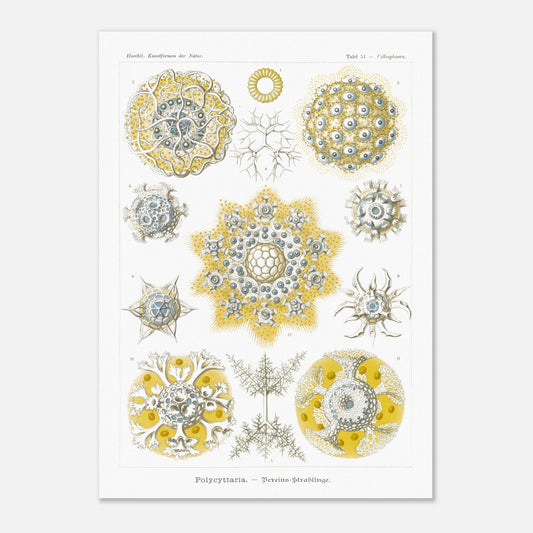Polycite radiolarians - Decorative encyclopedic plate - Ernst Haeckel, Kunstformen der Natur
Polycite radiolarians - Decorative encyclopedic plate - Ernst Haeckel, Kunstformen der Natur
Couldn't load pickup availability
Engraving reproduction of: Polycitarian Radiolarians
Original title Polycyttaria - Vereins-Strahlinge
Poster of Collosphaera - Protozoa of the Radiolaria family (Phaeodarian Legion)
Illustration from the book Kunstformen der Natur, which is a collection of artistic lithographs of natural sciences published by the German biologist Ernst Haeckel between 1899 and 1904.
This naturalistic illustration is part of an overall style inspired by Ernst Haeckel, which greatly influenced the emerging Art Nouveau movement at the beginning of the 20th century. This work, illustrating the impressive beauty and great diversity of the biological world, was complemented by a certain amount of scientific information, some excerpts of which are reproduced below.
This information is over 120 years old and some of it may be outdated!
Scientific classification:
Phylum Protozoa Main class Rhizopoda (Rhizopoda) Class Radiolaria (Radiolaria) Order Spumellaria or Shelled Radiolaria (Spumellaria) Order Polycyttaria
Scientific notice (extract) accompanying the poster print of Polycyttaria - Polycytarian Radiolaria :
The small order of "colonial radiolarians" or "social radiolarians," grouped in systematics under the name Polycyttaria, is distinguished from other protozoa of this class by their tendency to associate. While the vast majority of radiolarians are represented by "solitary cells" living in isolation (Eremobia, Plates 1, 11, 21, 31, 41), the Polycyttaria, on the other hand, form permanent cell associations (coenobia). The numerous social cells that constitute such an association or "cell colony" each have their own central capsule, surrounded by a solid membrane, in the center of which is the cell nucleus (replaced in old age by a ball of fat). On the other hand, the soft calymma, the gelatinous envelope in which the central capsules are embedded, is common to all; Often the gelatin is filled with water bubbles or vacuoles, and sometimes a larger spherical central bubble is distinguished by special features (Fig. 12). The countless plasma filaments radiating from the individual central capsules branch out and connect inside the calymma to form a dense network; on the surface, however, they radiate as fine radial tentacles. Numerous yellow cells, scattered in the calymma between the capsules, do not belong to the colony itself, but are unicellular plants (algae) of the genus Xanthella; they live in symbiosis with radiolarians (association for mutual benefit; Figs. 2, 10, 11, 12). The Polycyttaria belong (because of the structure of their central capsule) to the legion Spumellaria and form a separate order within this legion. This order comprises three families: I. Collozoida, which do not form a siliceous skeleton; II. Sphaerozoida with a siliceous skeleton composed of numerous individual needle-like siliceous pieces, loosely dispersed and unbound in the calymma (Fig. 2-5); III. Collosphaerida, in which each individual central capsule is surrounded by a reticulated siliceous shell (Fig. 6-12).
Species present on the naturalist plate of Polycitarian Radiolaria - Collosphaera :
- Collosphaera primoridalis
- Thalassoxanthium medusinum
- Sphaerozoum ivodimare
- Thalassoxanthium cervicorne
- Spaherozoum spinosissimum
- Coronophaera diadema
- Trypnophaera trepanata
- Acrosphaera inflata
- Mazosphaera lagotis
- Caminosphaera dendrophora
- Coronosphaera calycina
- Solenosphaera familiaris
About this print
About this print
The layout and composition of this reproduction have been the subject of our greatest attention.
- Respect for the format of the original work: in order to faithfully transcribe the artist's intention, the work is not cropped/re-cut except in extreme cases (obvious imperfection, geometry problem, etc.) in which case the cropping will be as light as possible.
- The presence of white margins is sometimes necessary in order to present the work in a balanced manner.
- Each size offered has been specifically composed, therefore, the size of the white margins may vary from one print size to another. Remember to check this detail carefully!
- Print only, frame not included!
Features
Features
- Premium 200gsm matte white paper, durable and strong.
- Natural, smooth uncoated finish, silky to the touch
- FSC certified paper or equivalent certifications depending on regional availability.
- Each print is shipped in sturdy packaging, ensuring safe transport.
- Each print is printed and shipped on demand. No minimum order quantity is required.
Share !
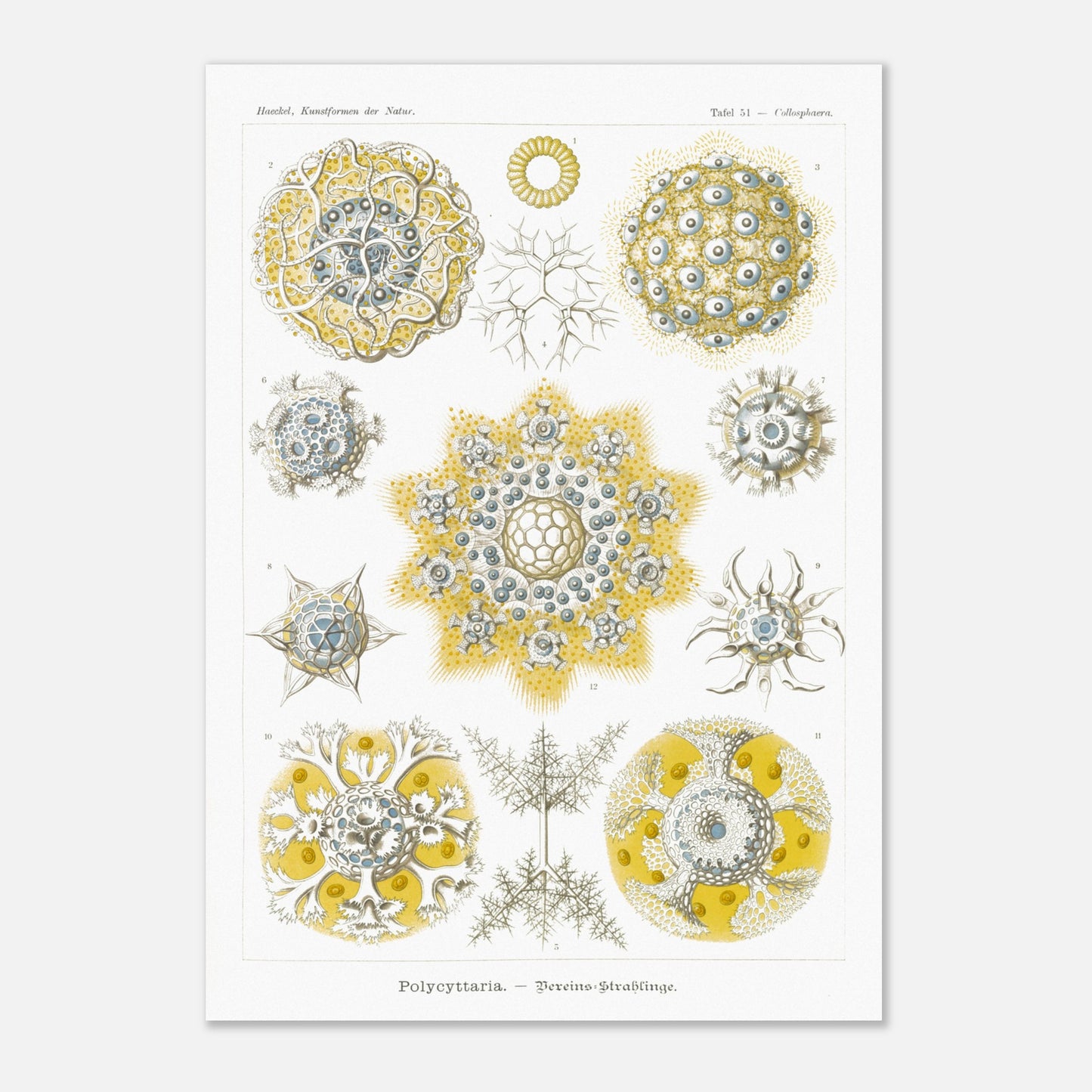
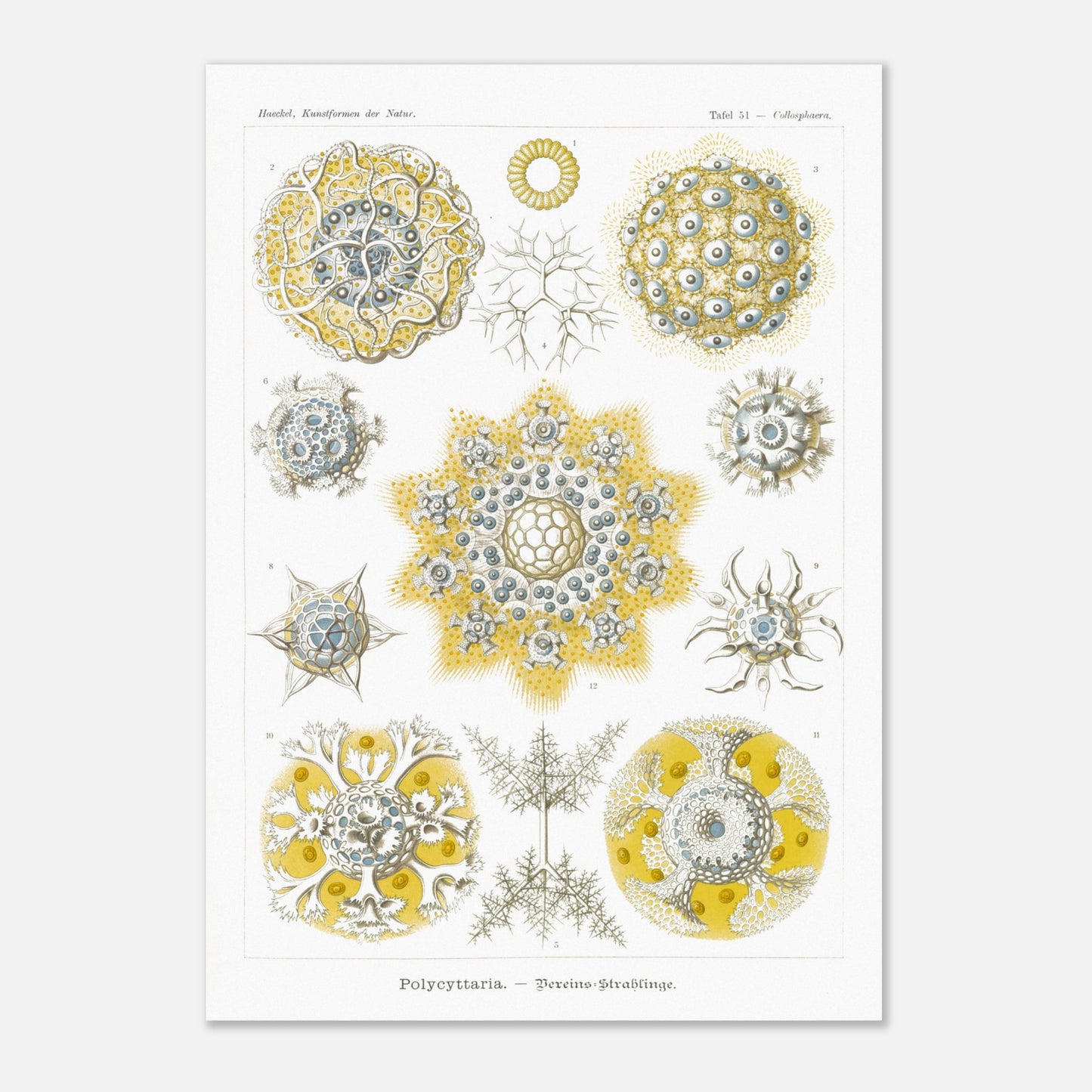
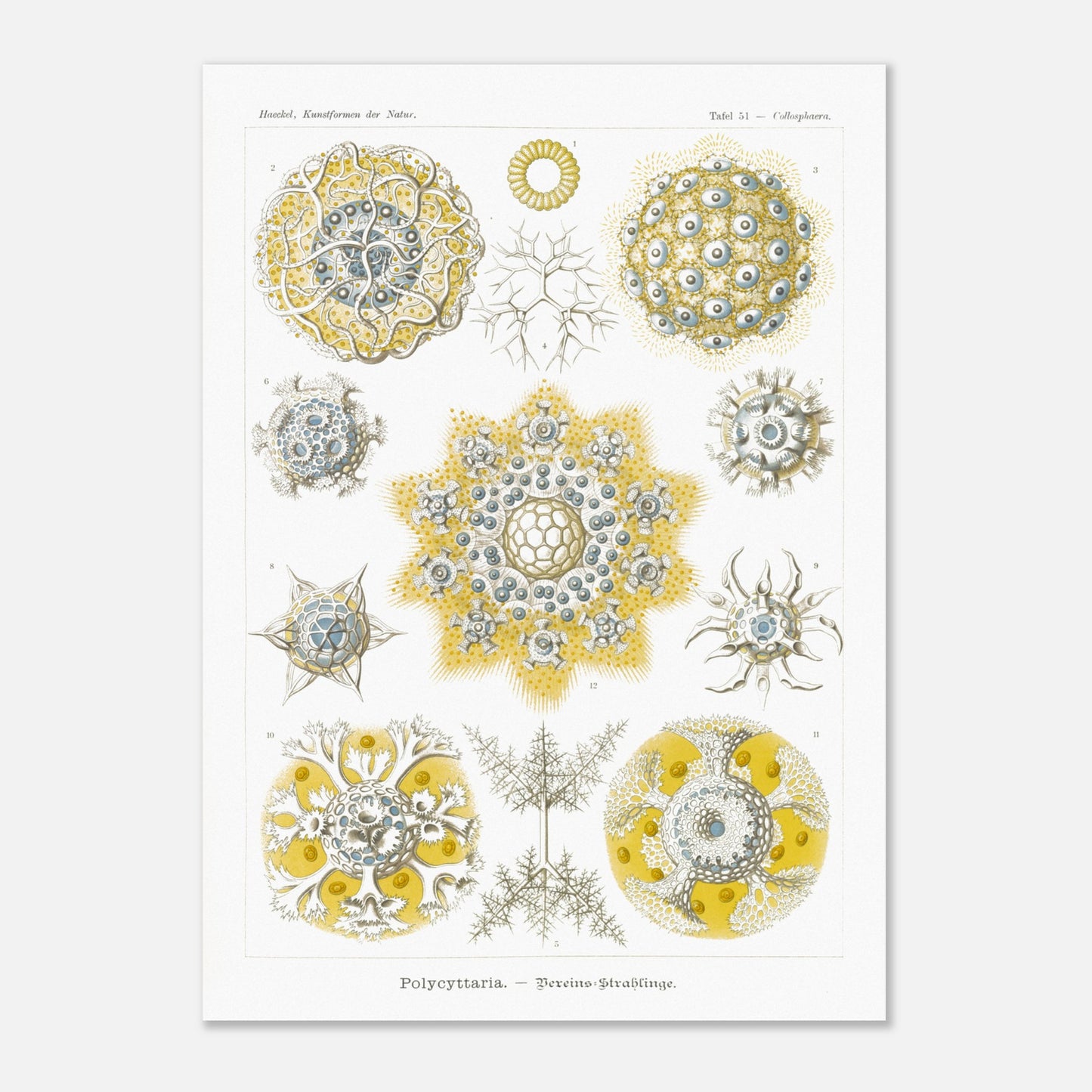
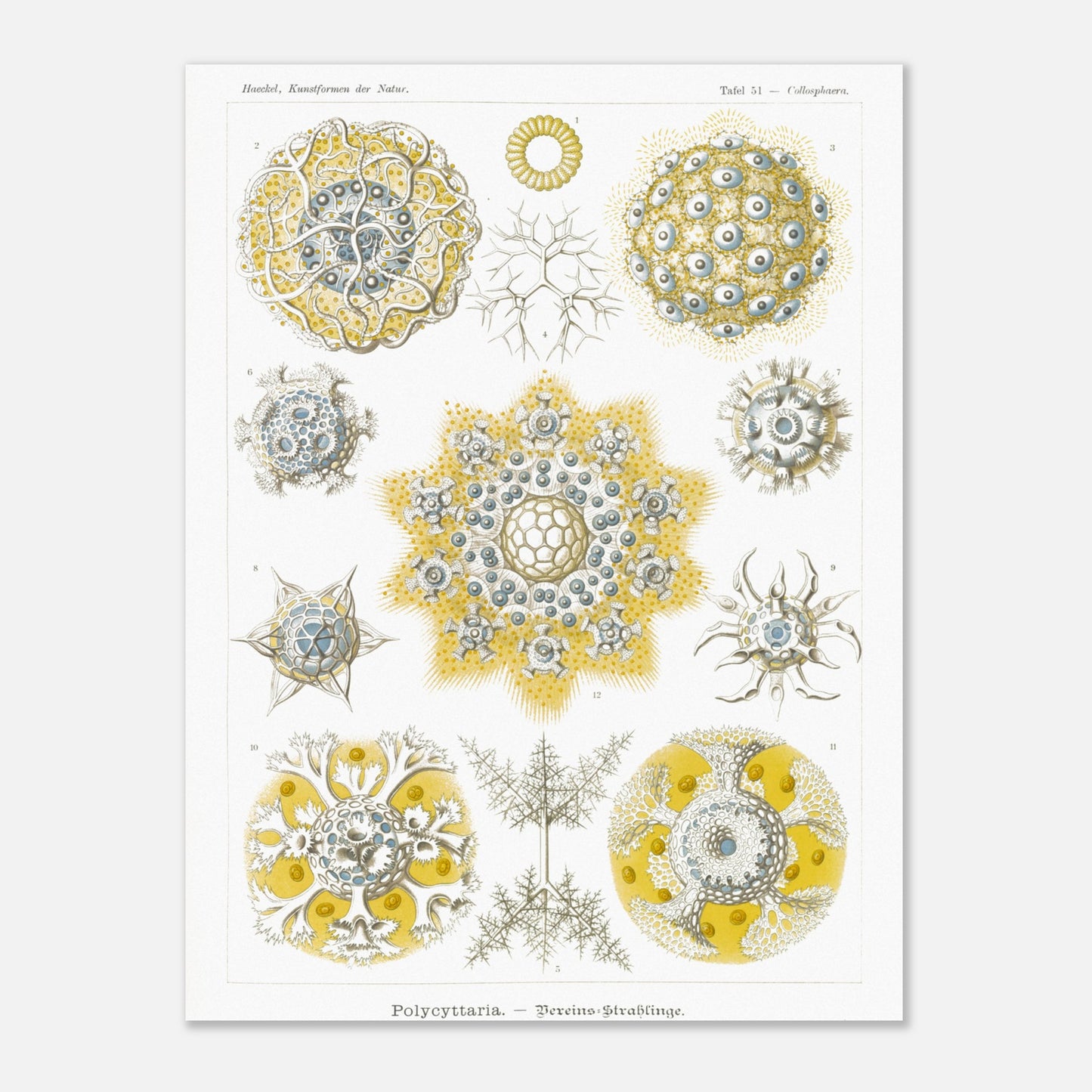
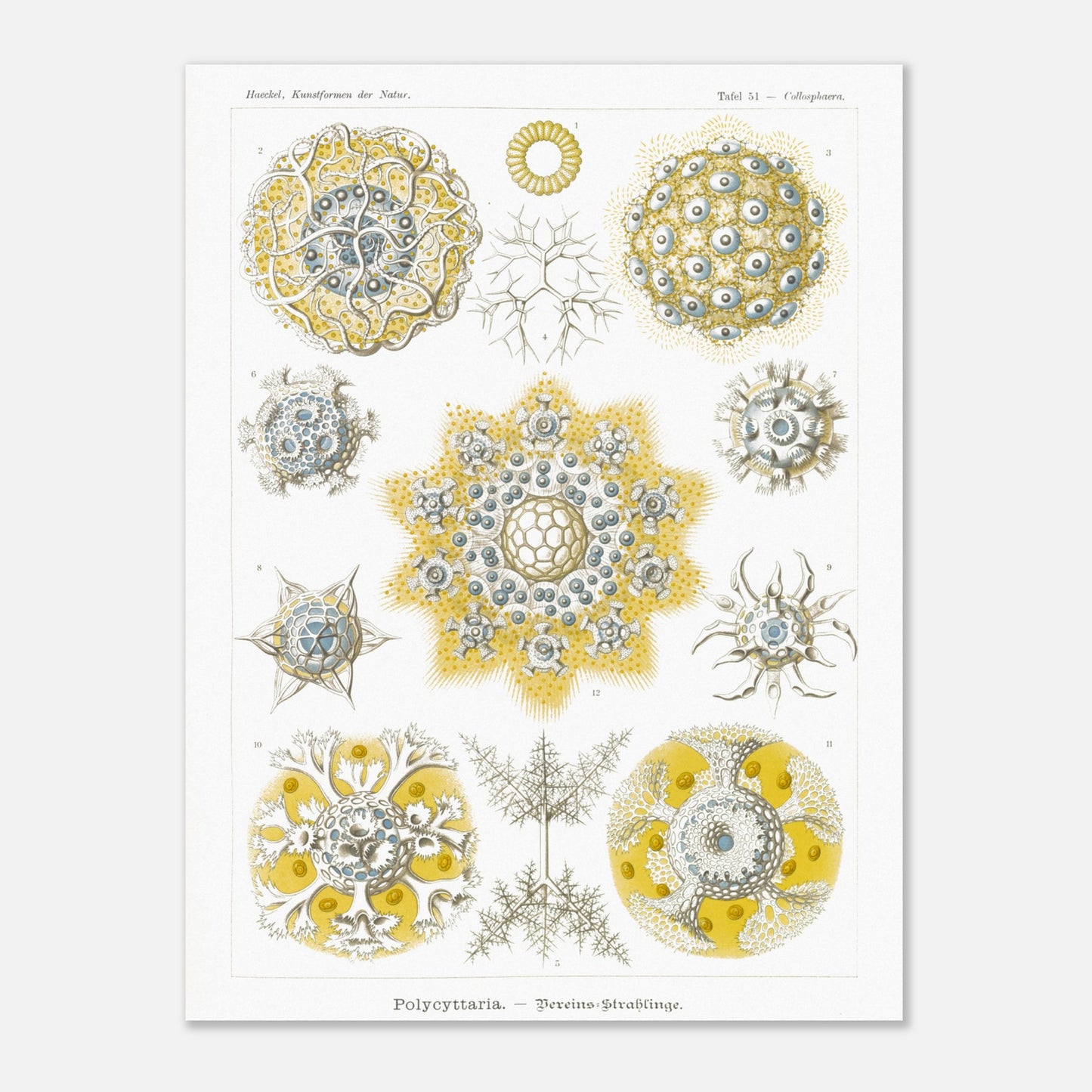
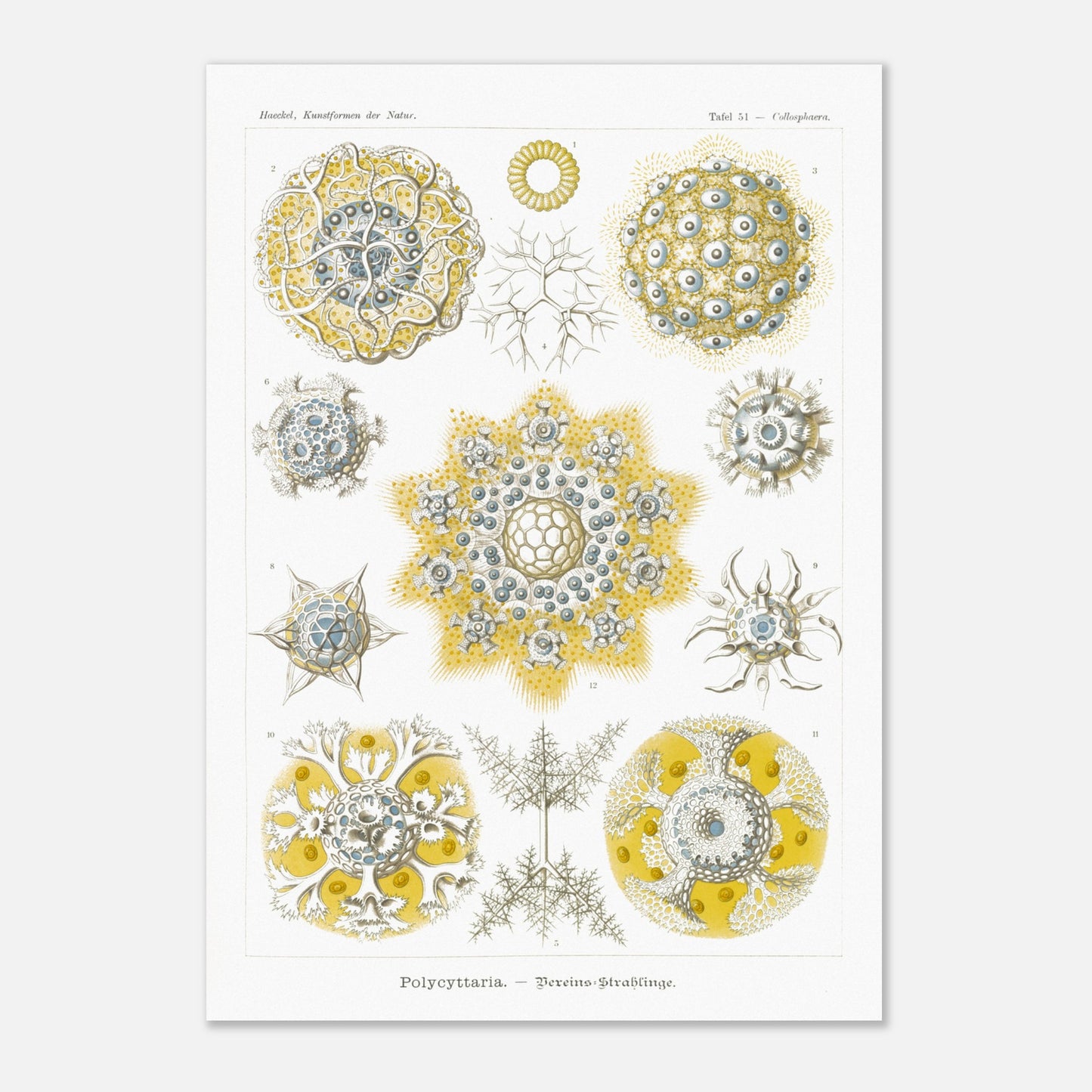
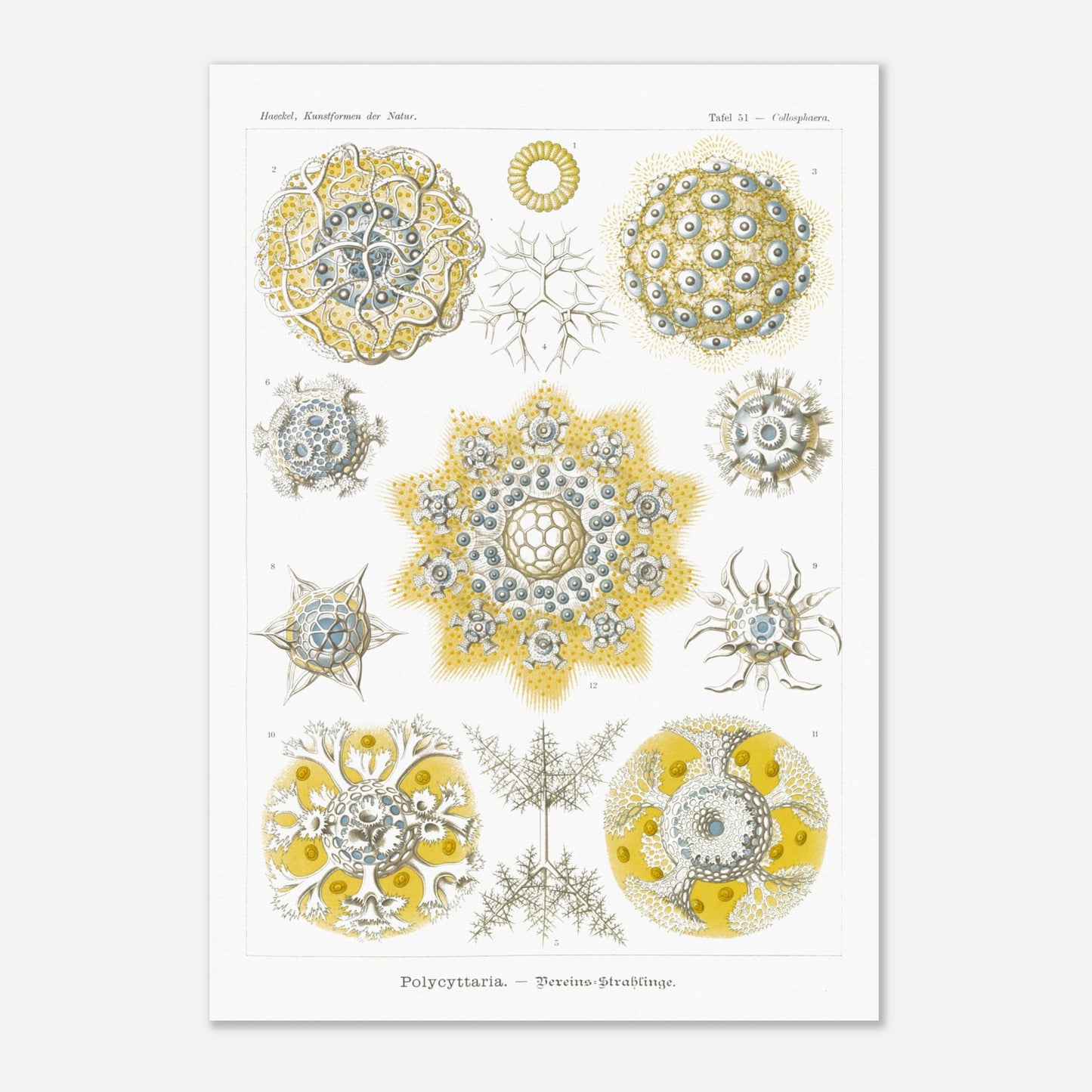
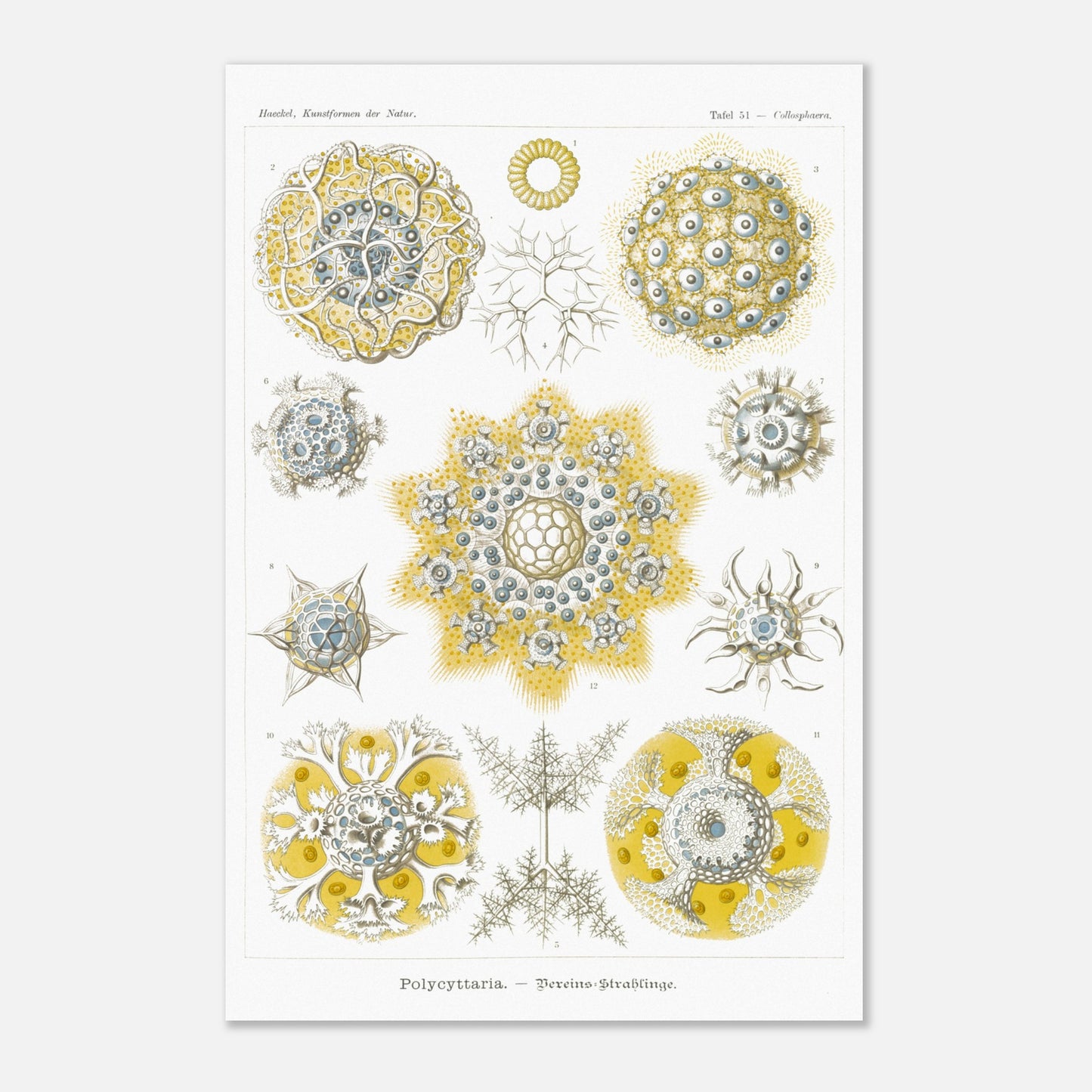
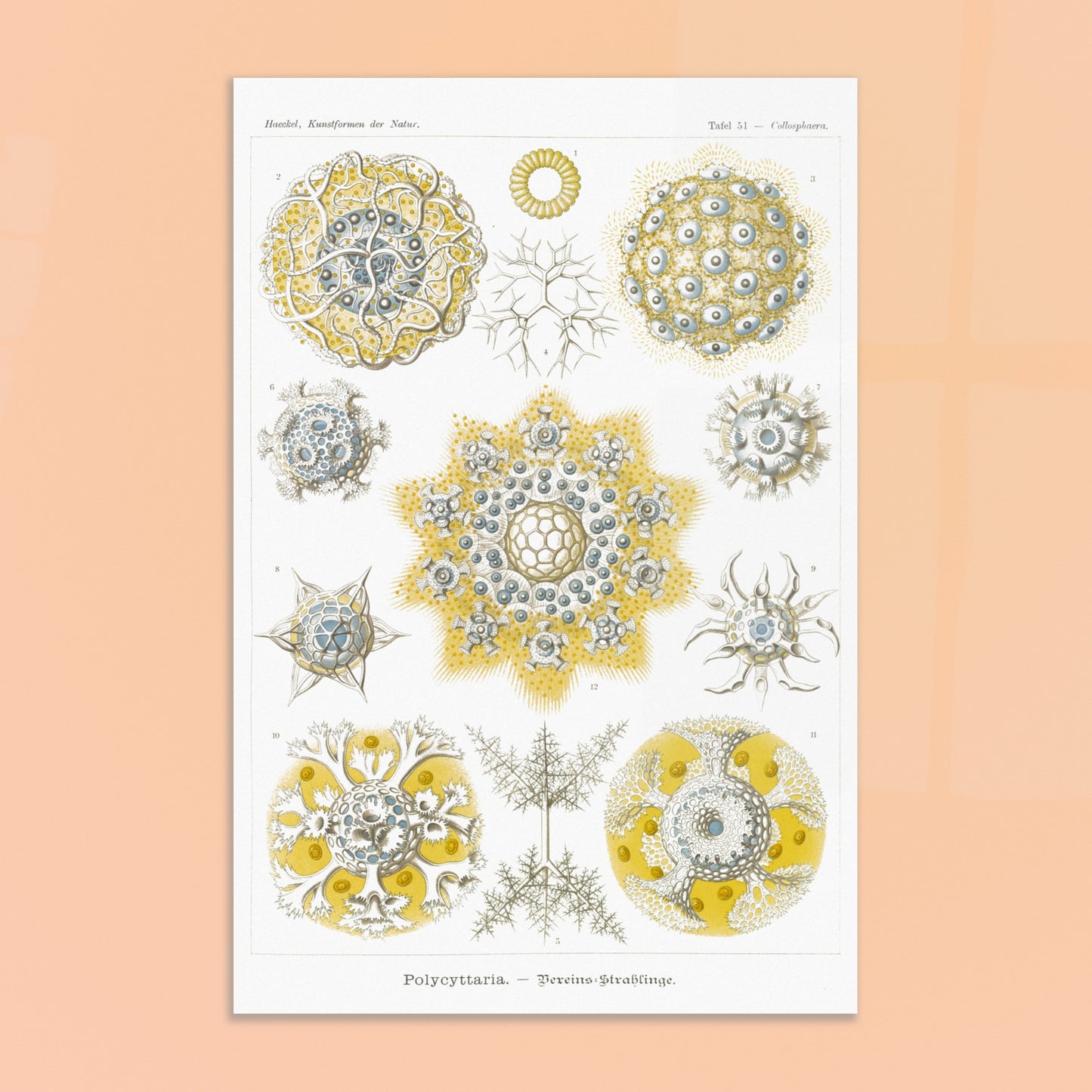
We are listening to you
If you are looking for a specific composition, a particular layout, or any other customization need, our team is at your disposal and will do everything possible to meet your requests.
So don't hesitate to...




